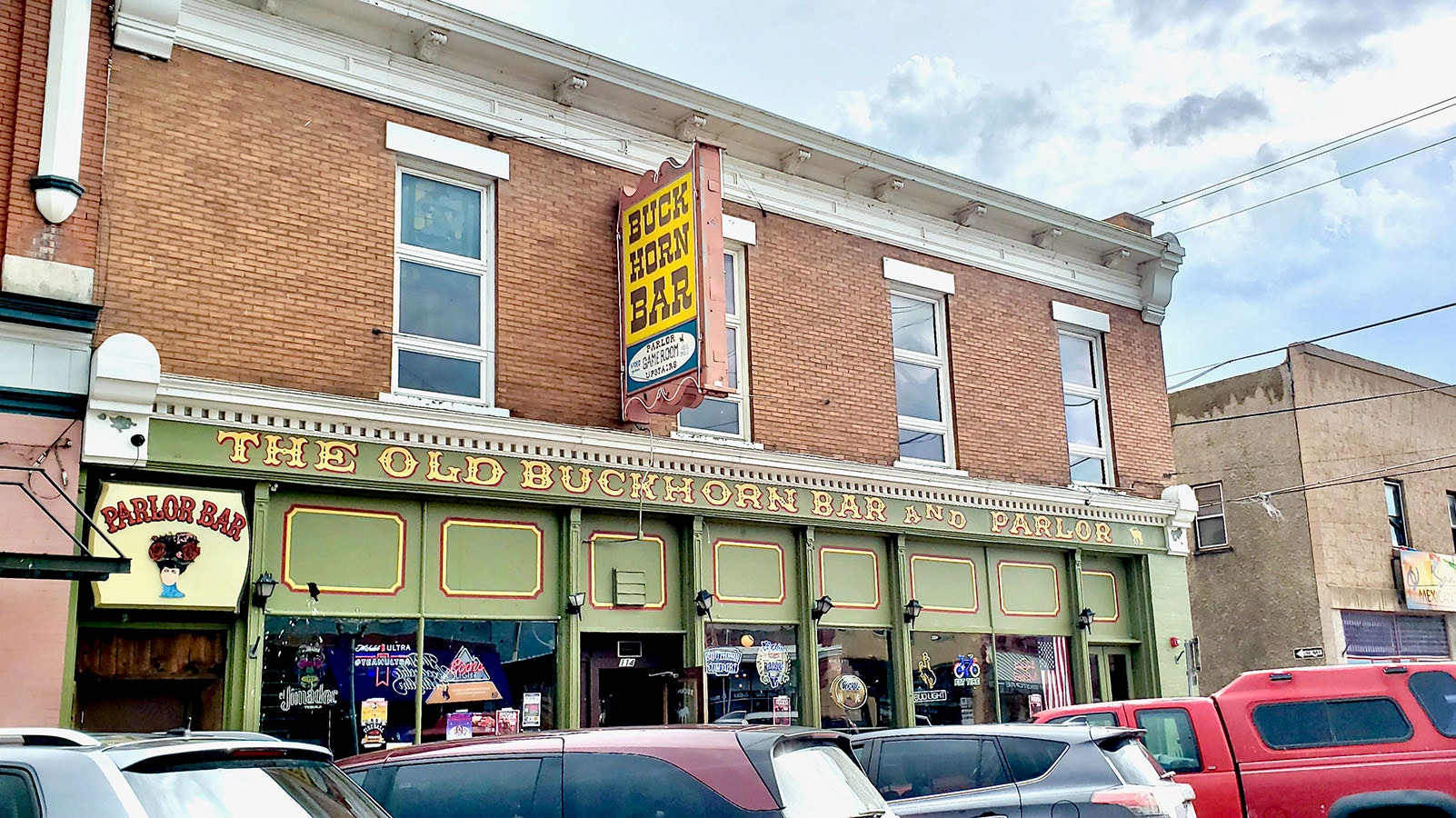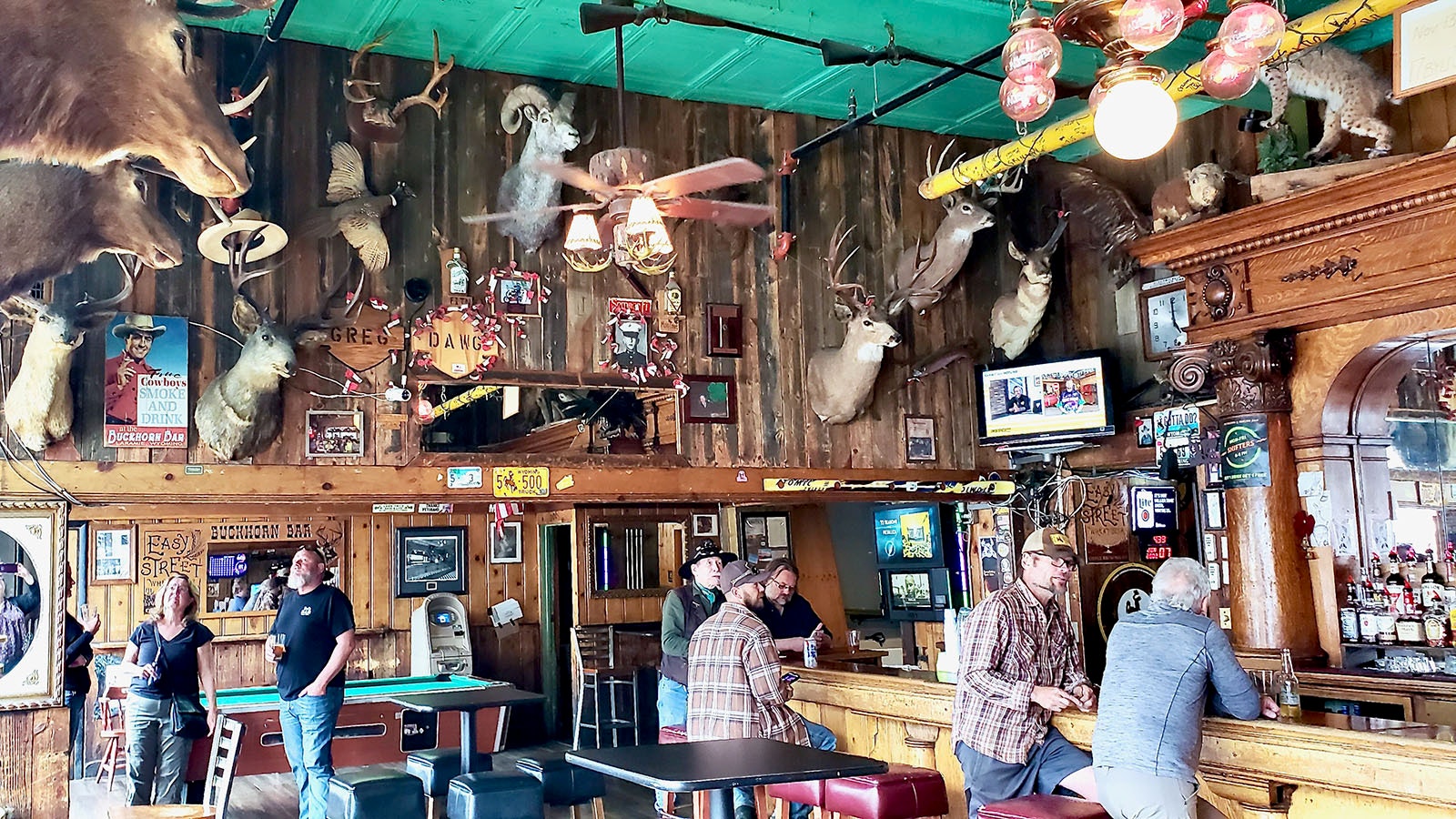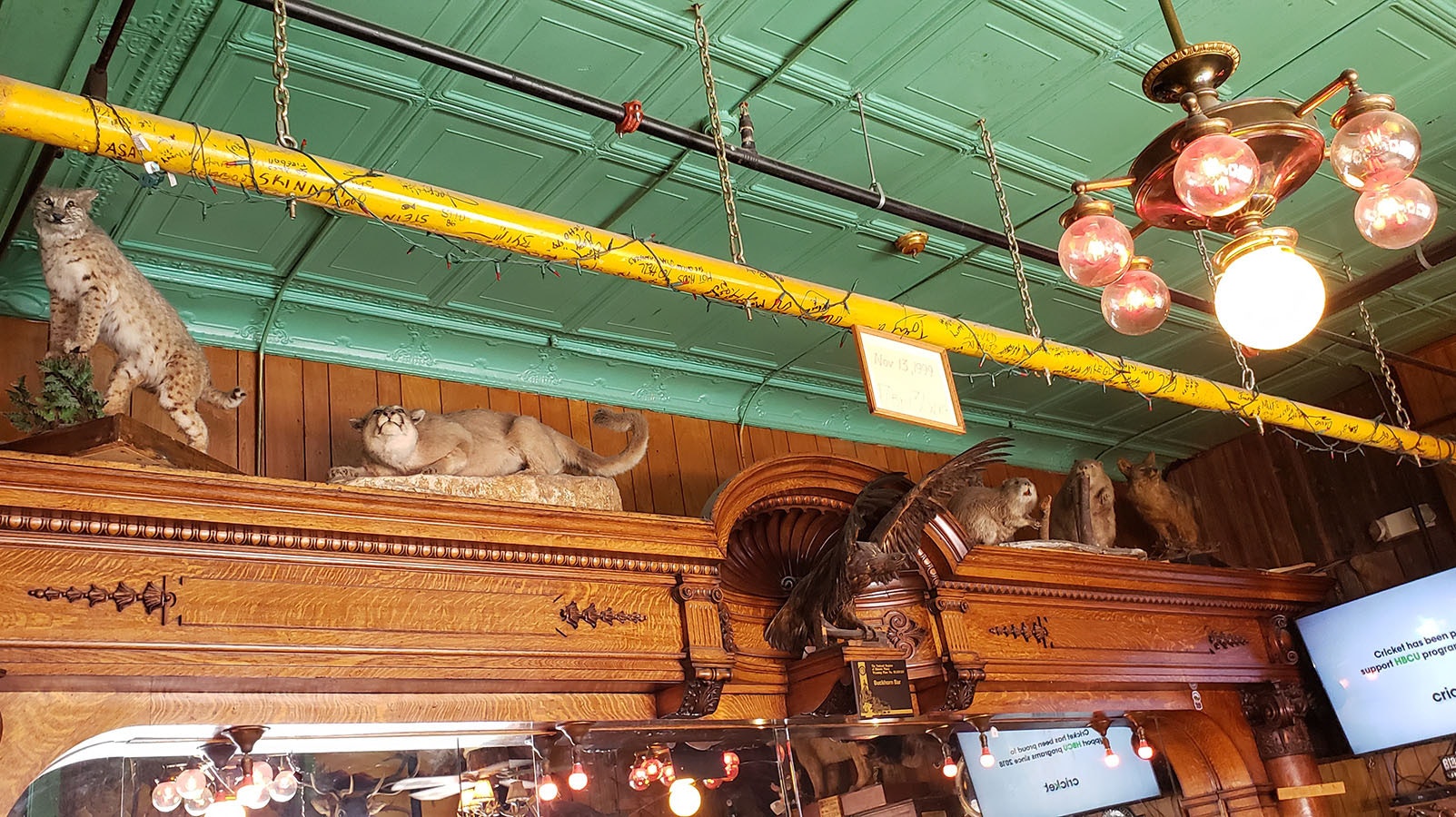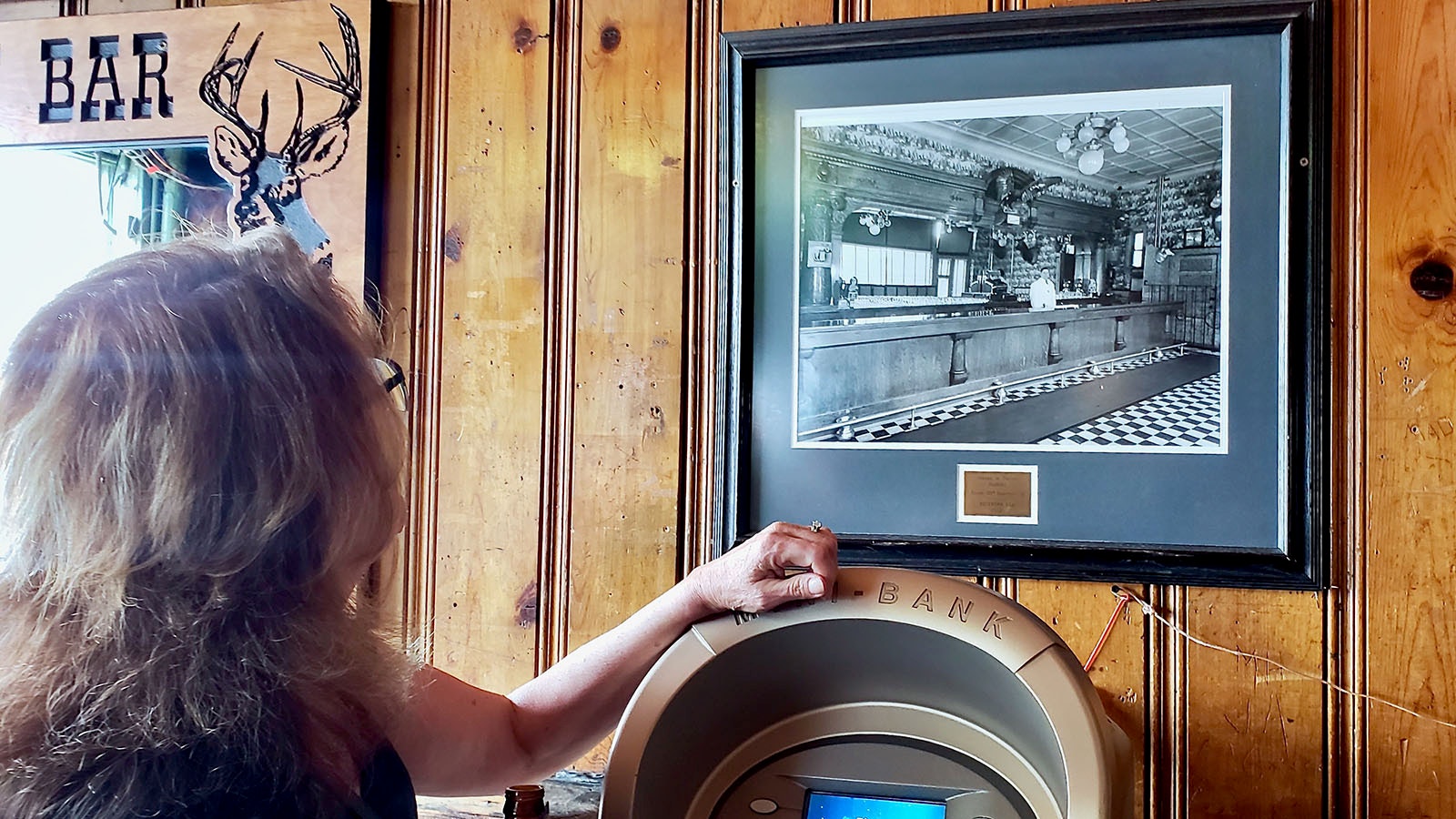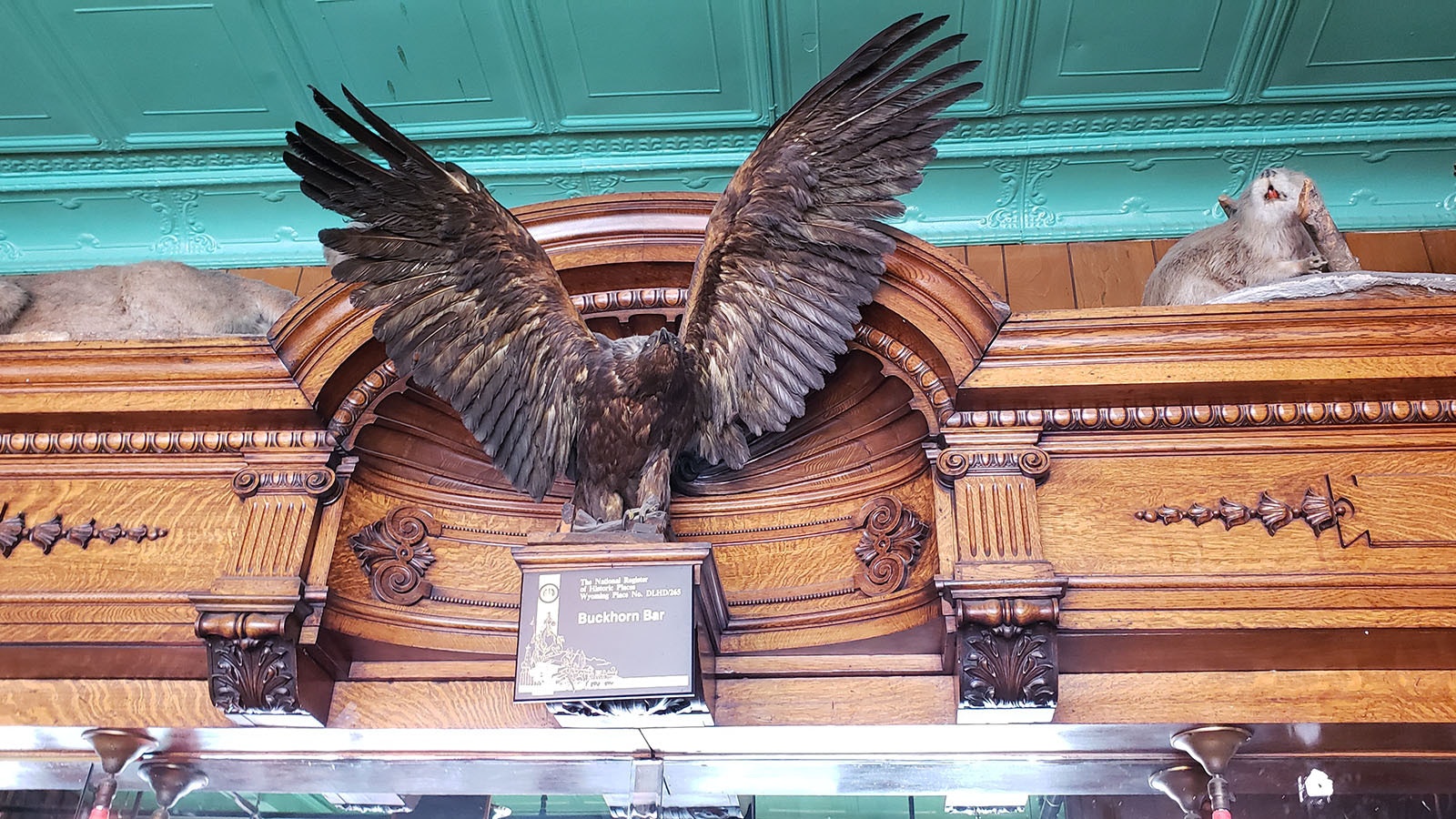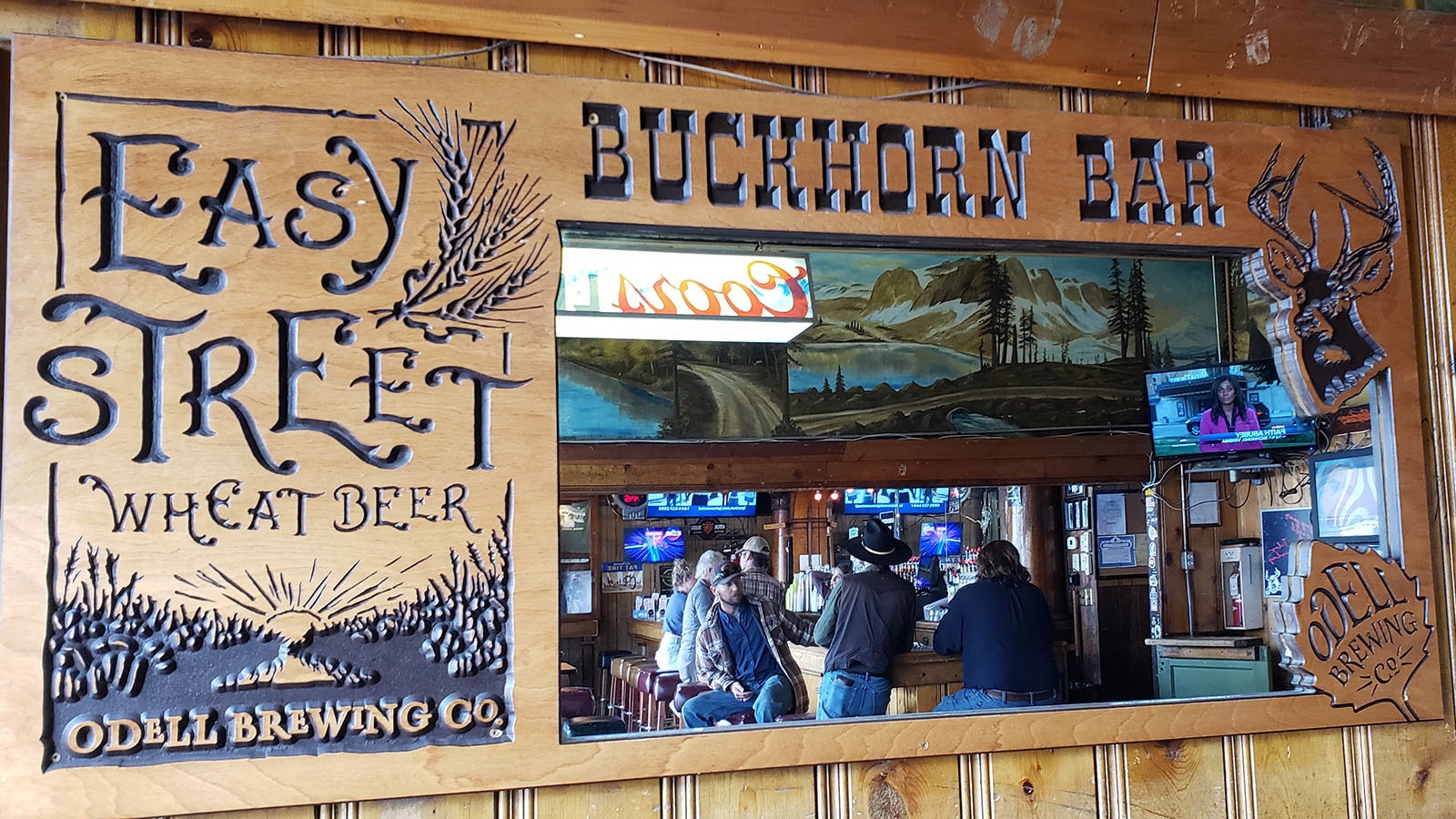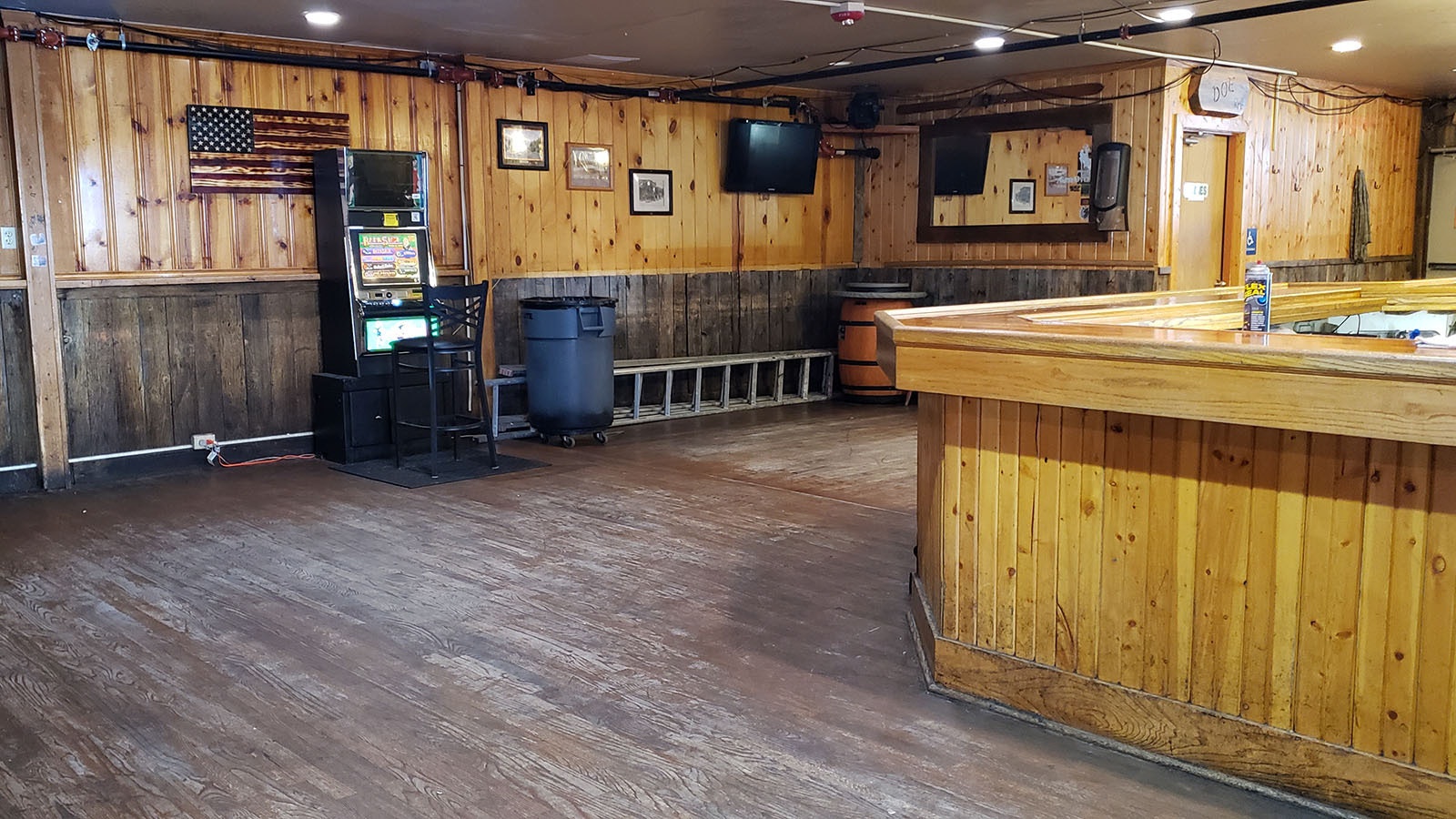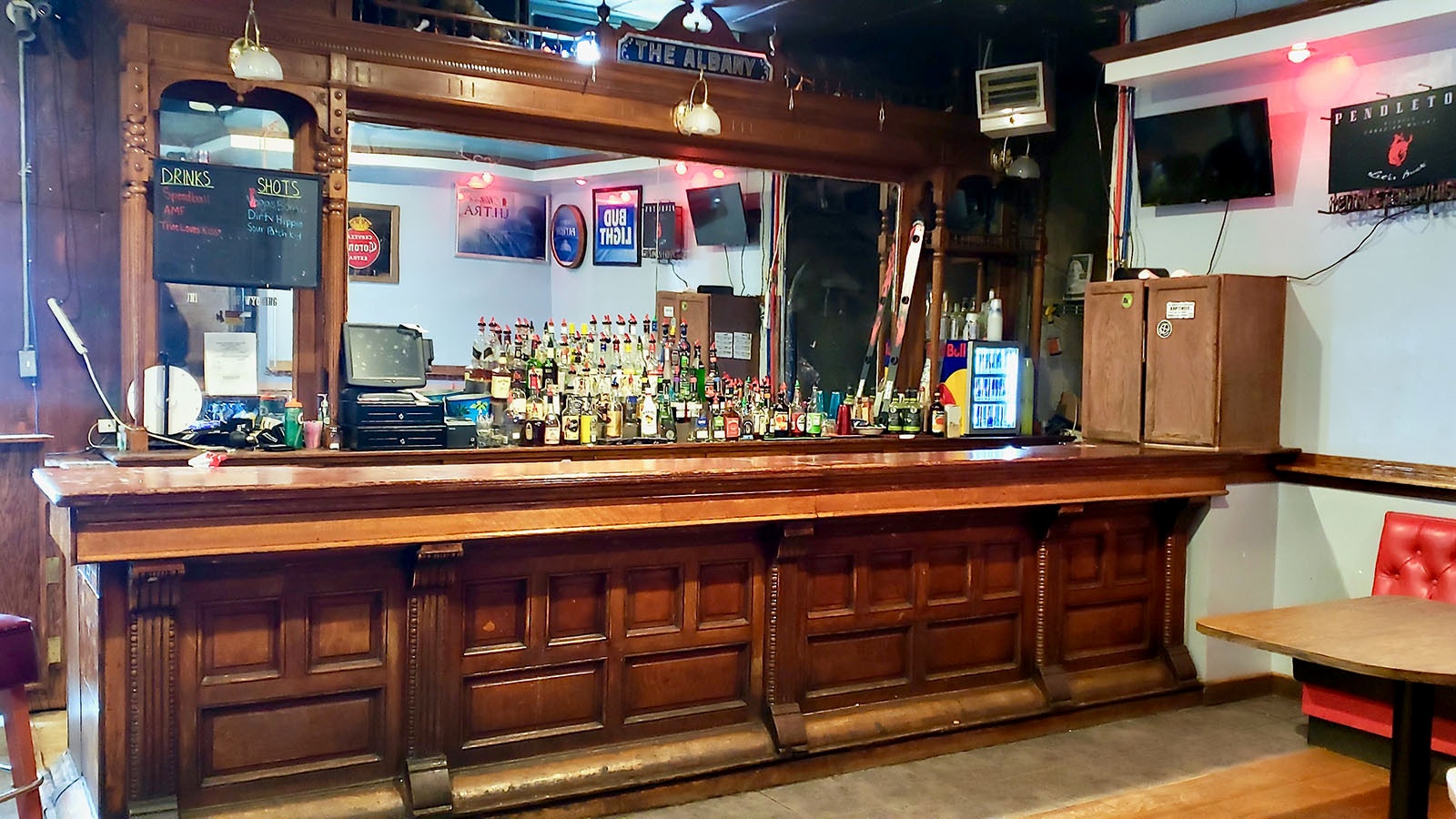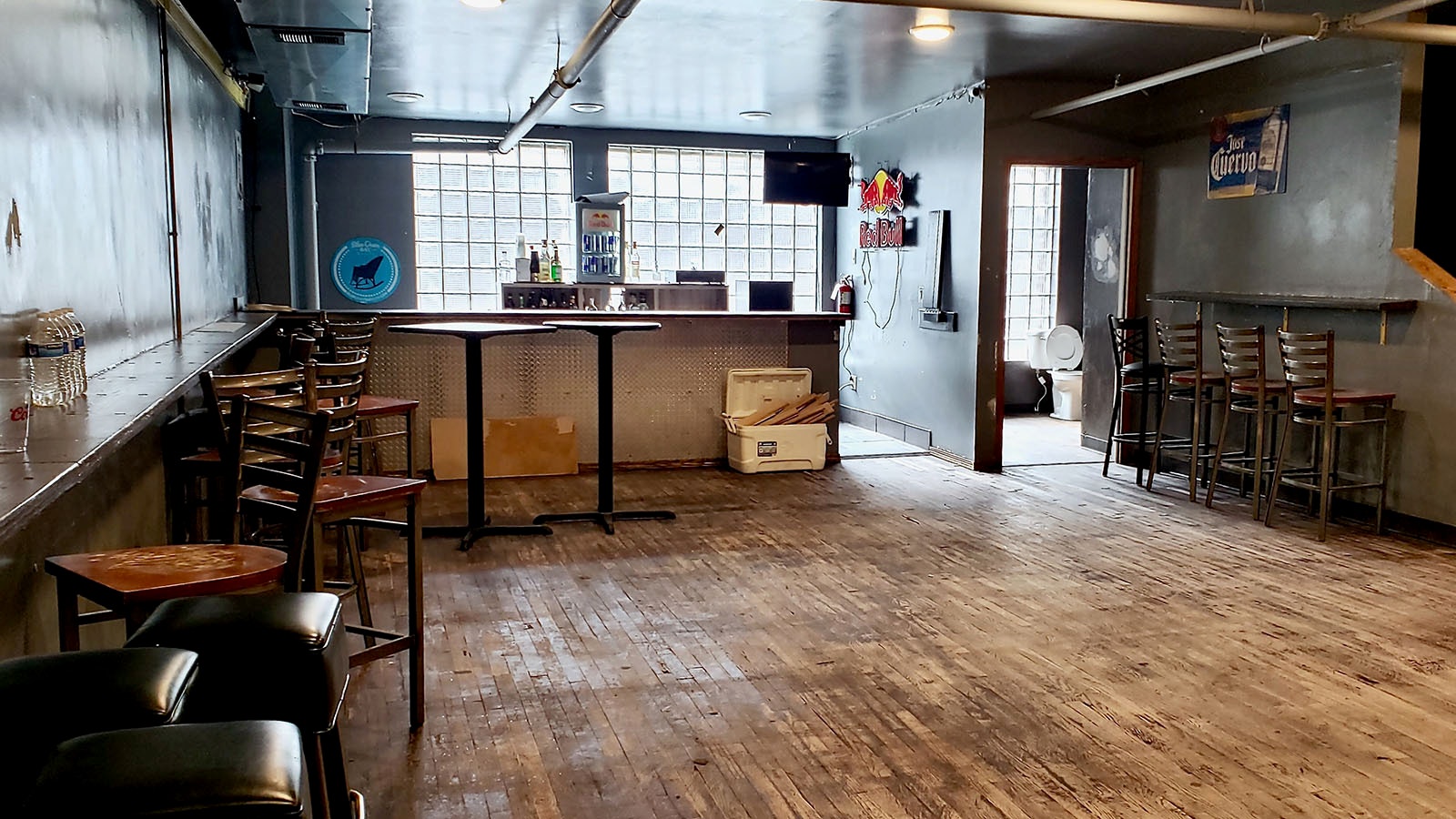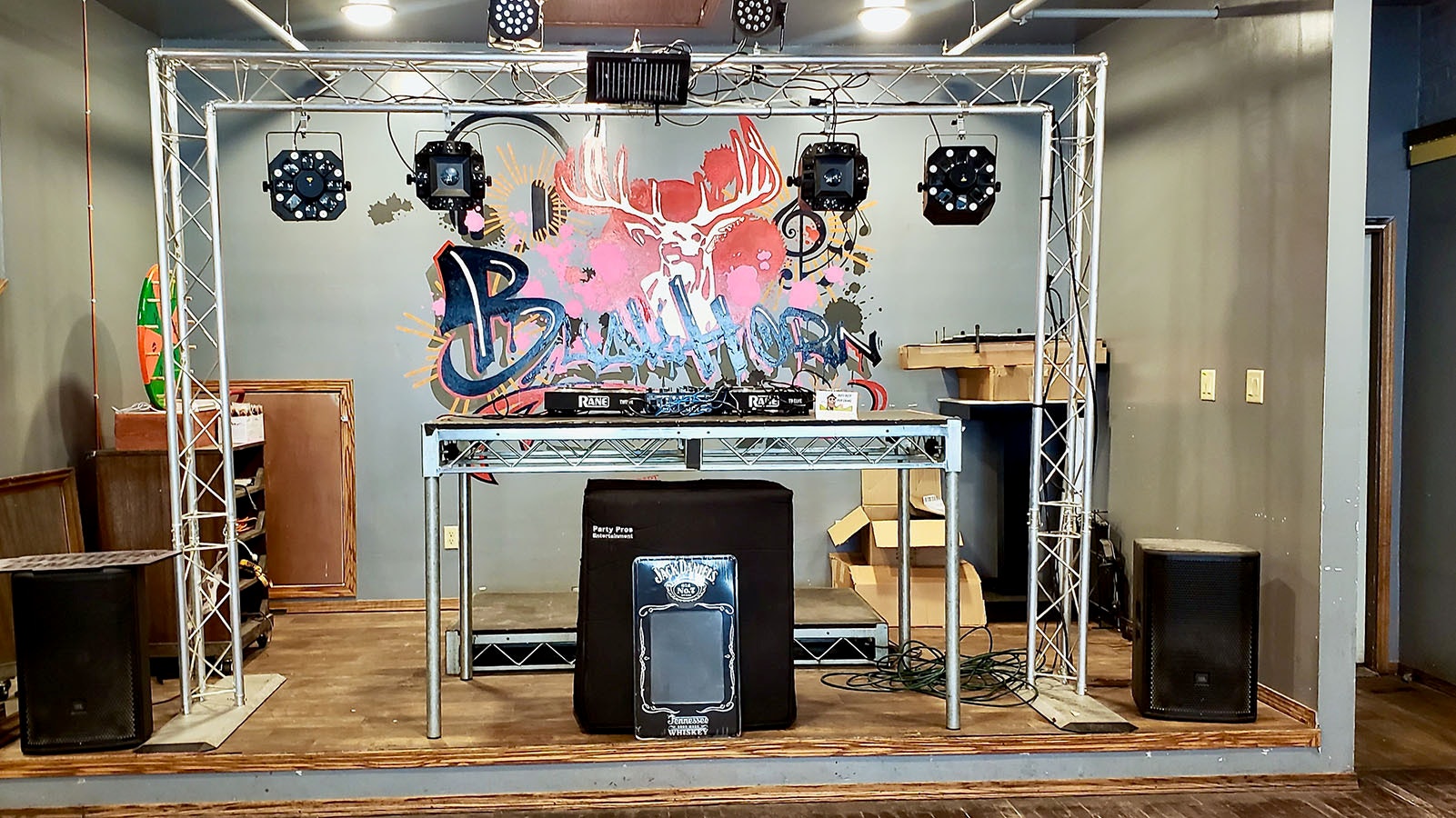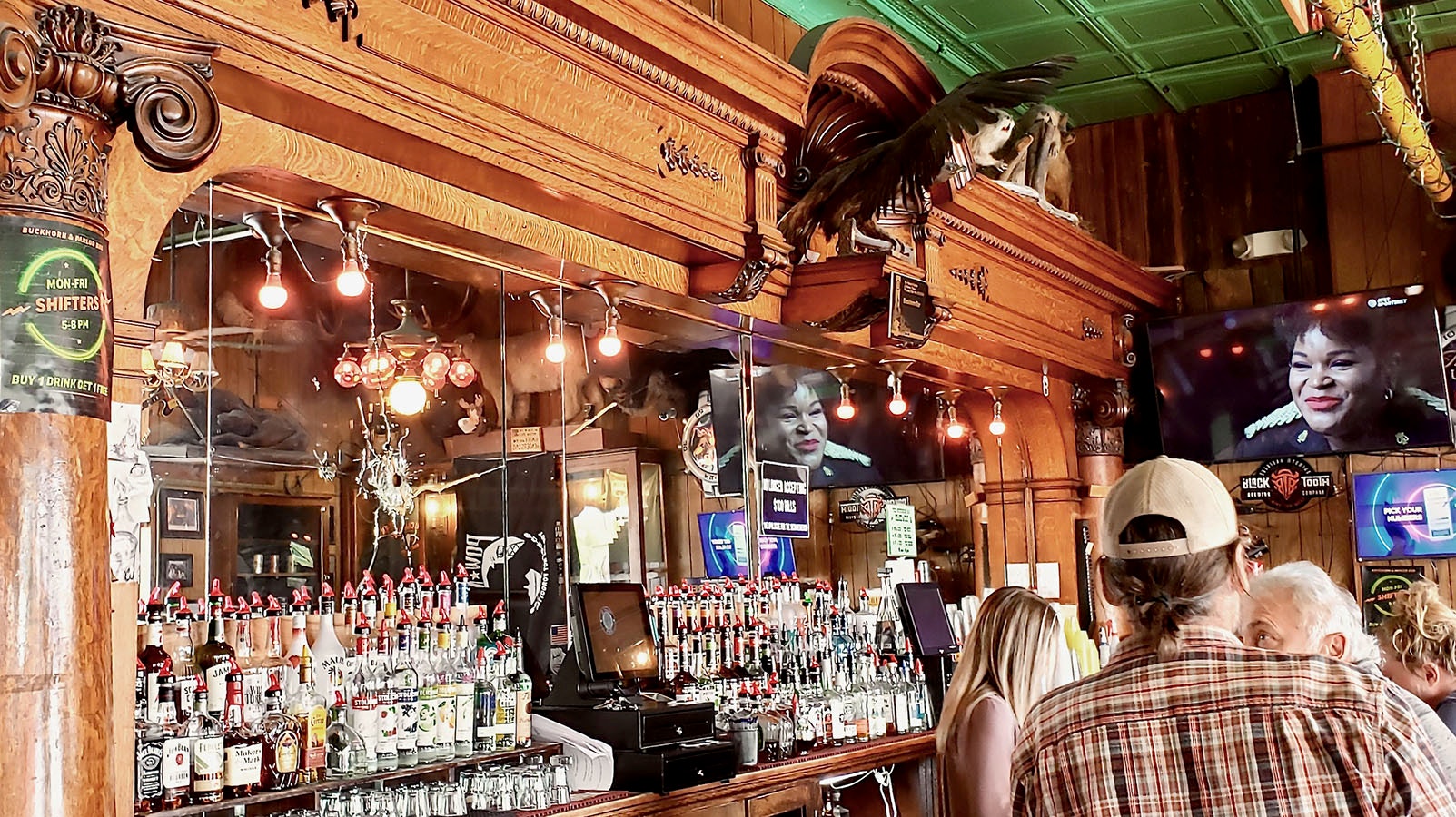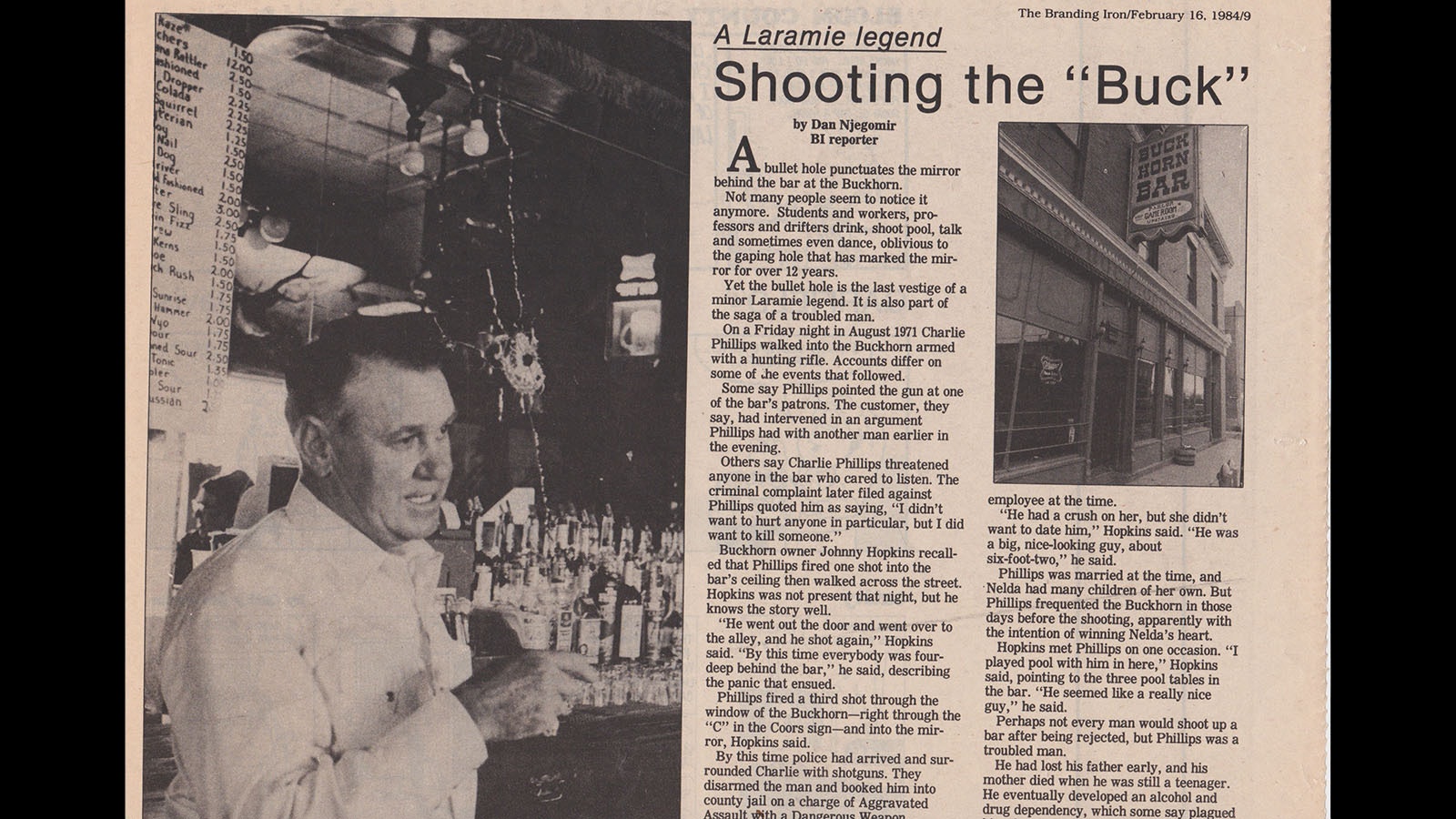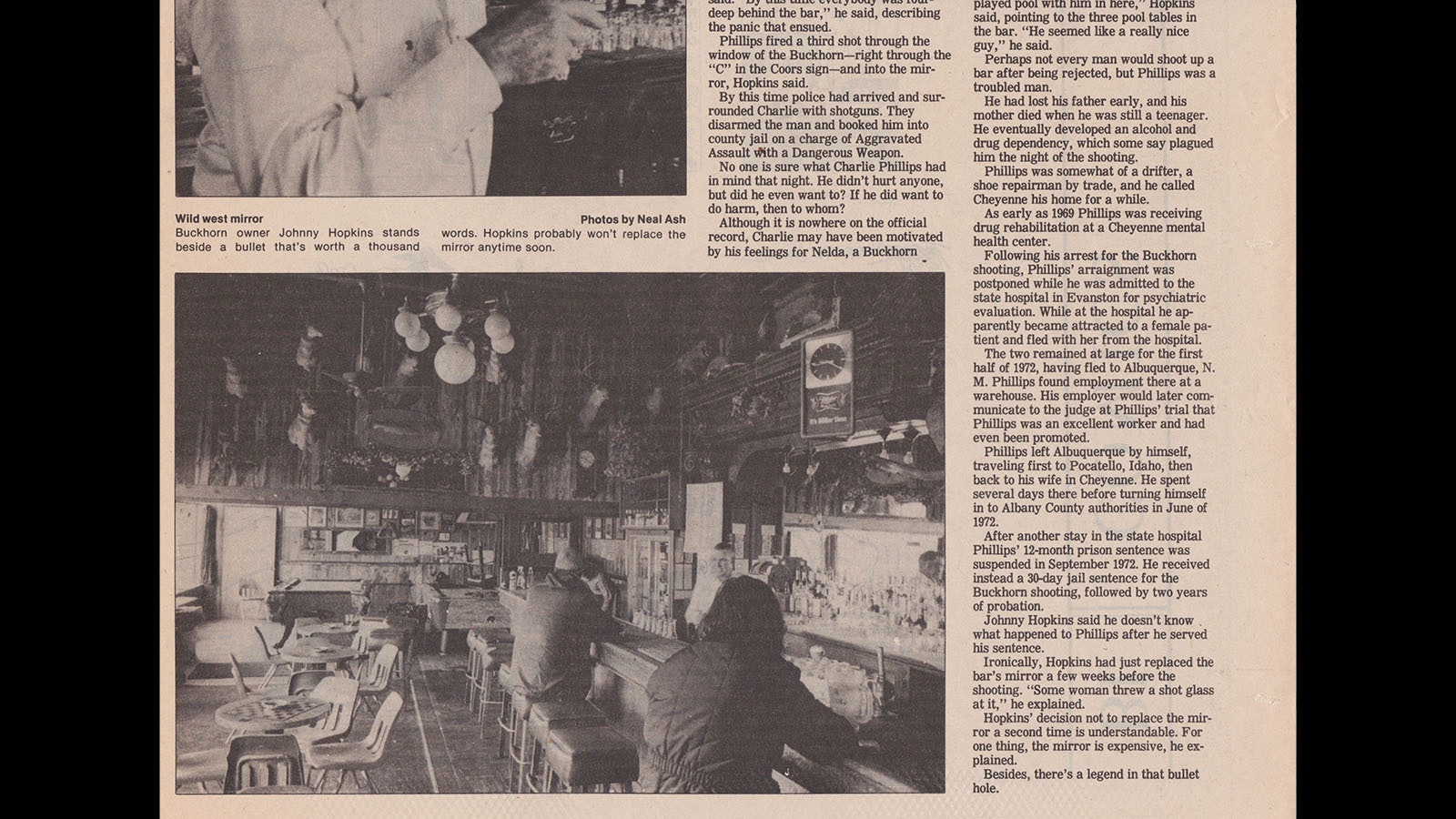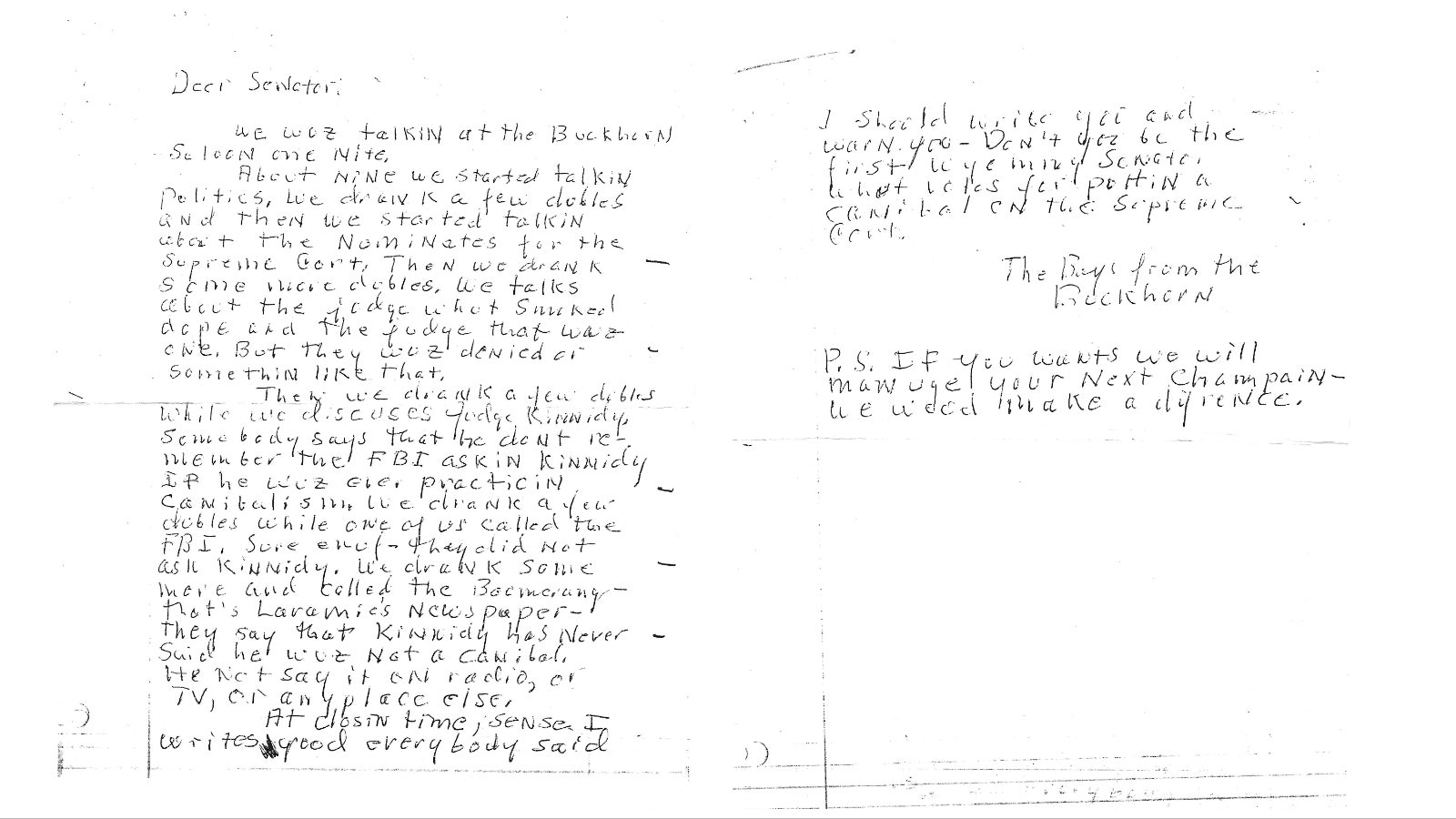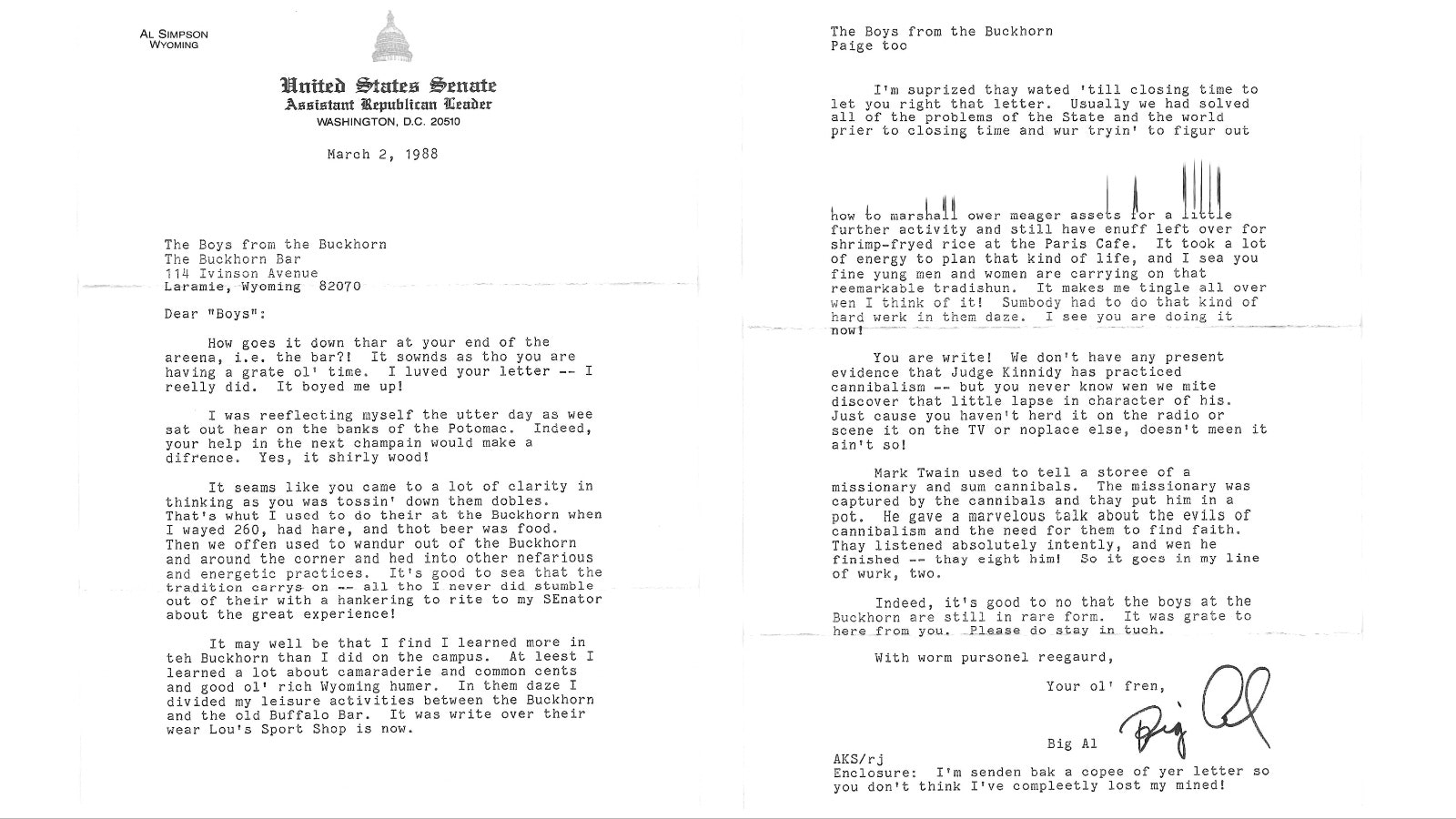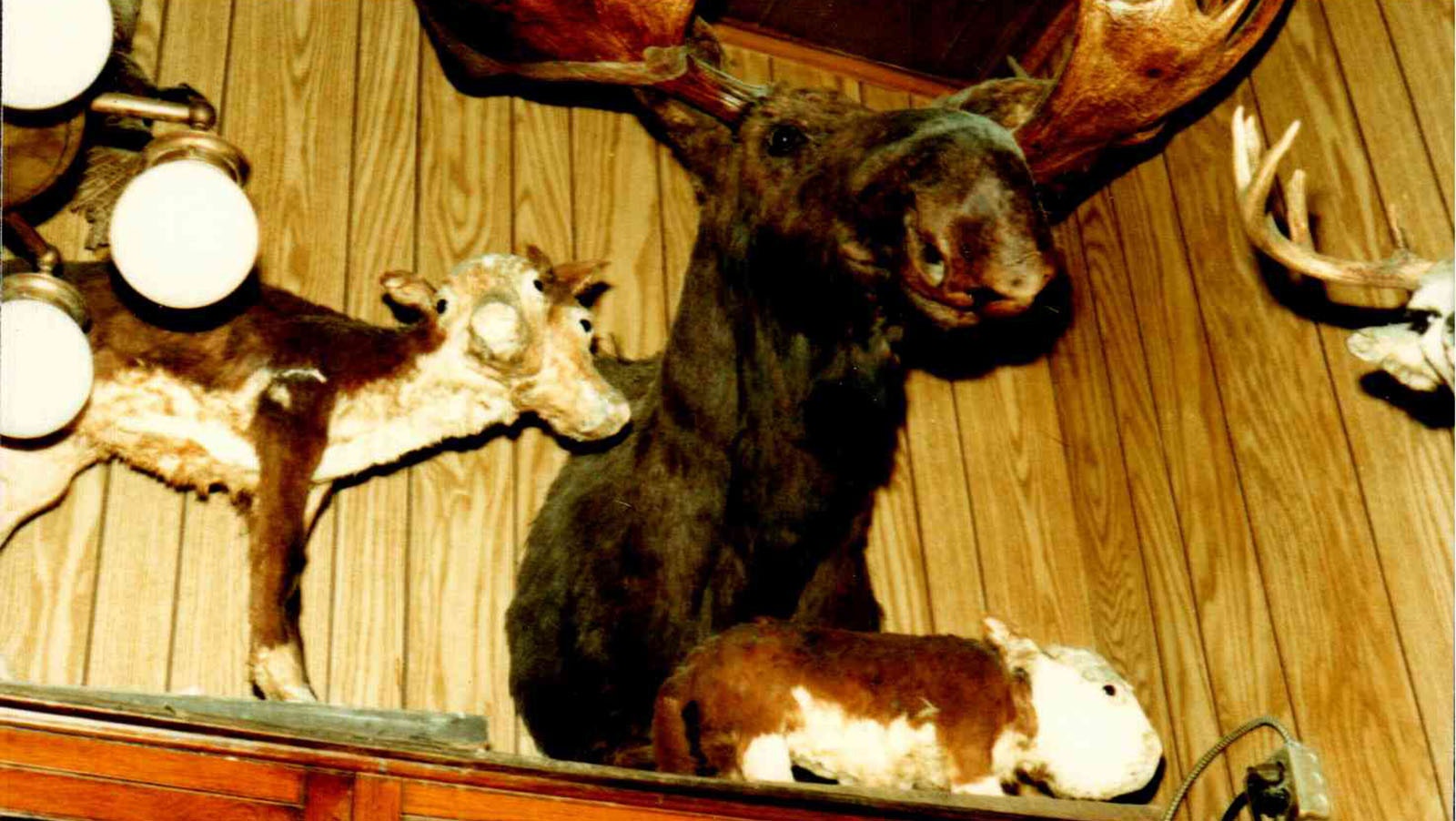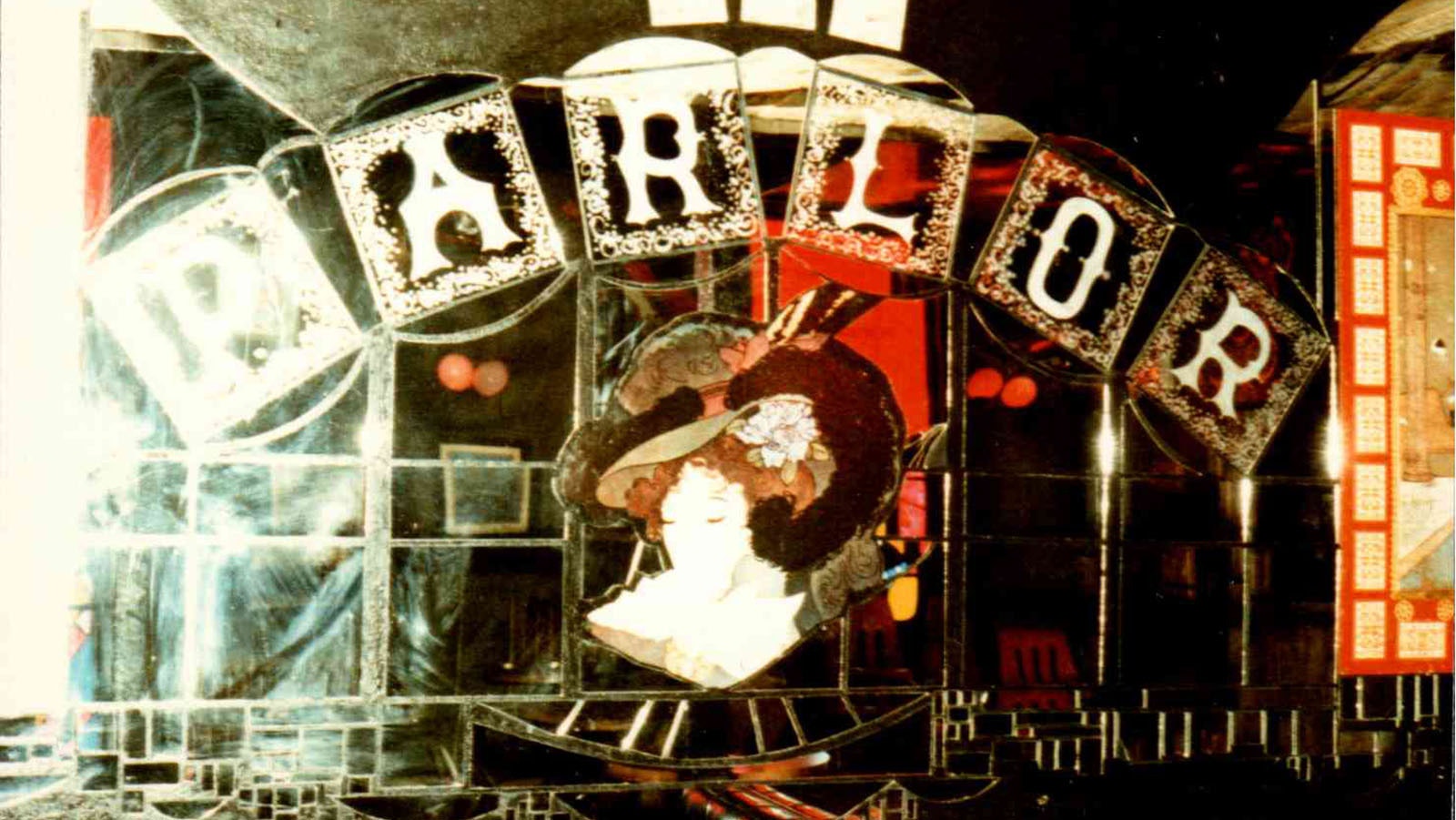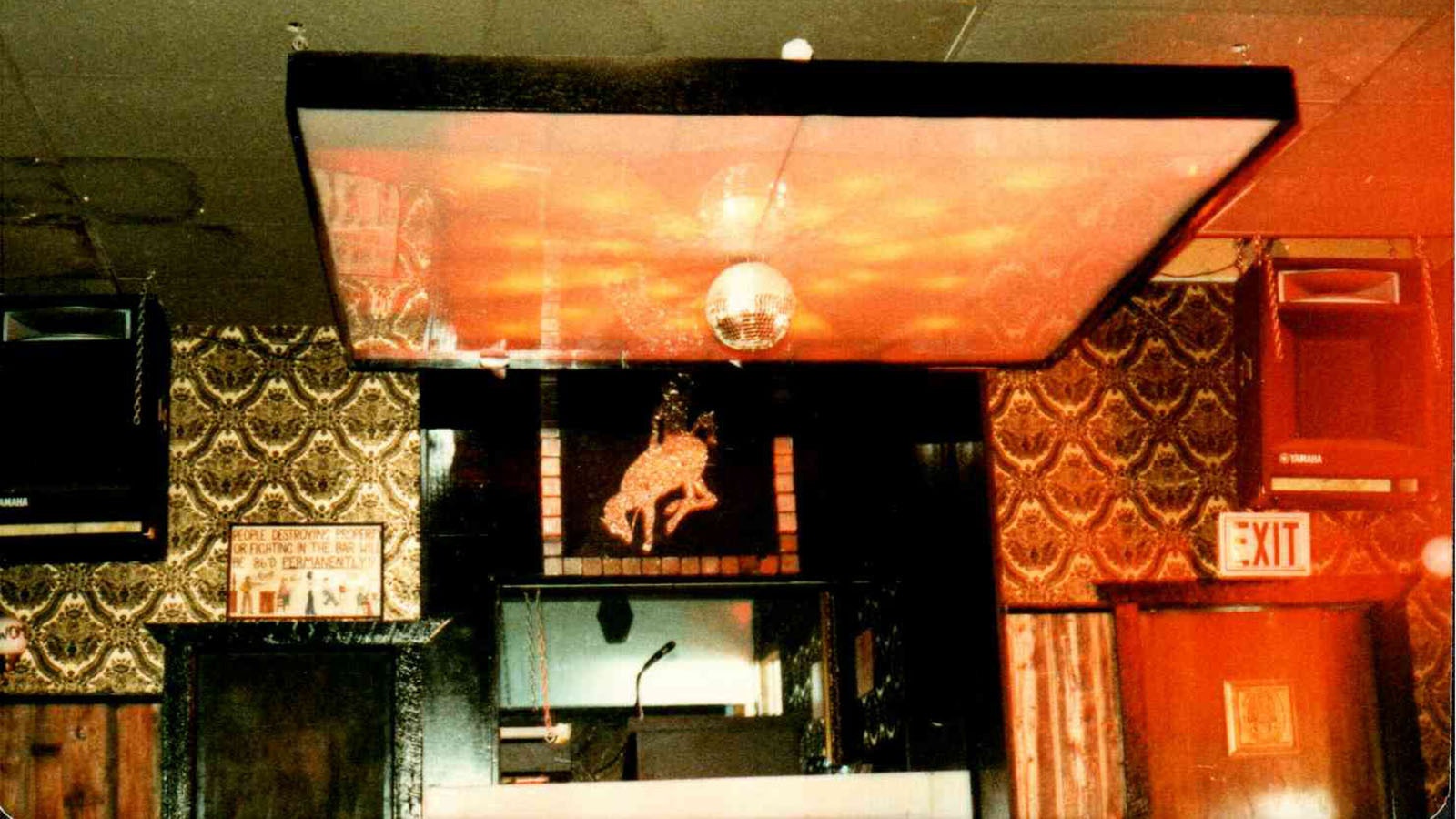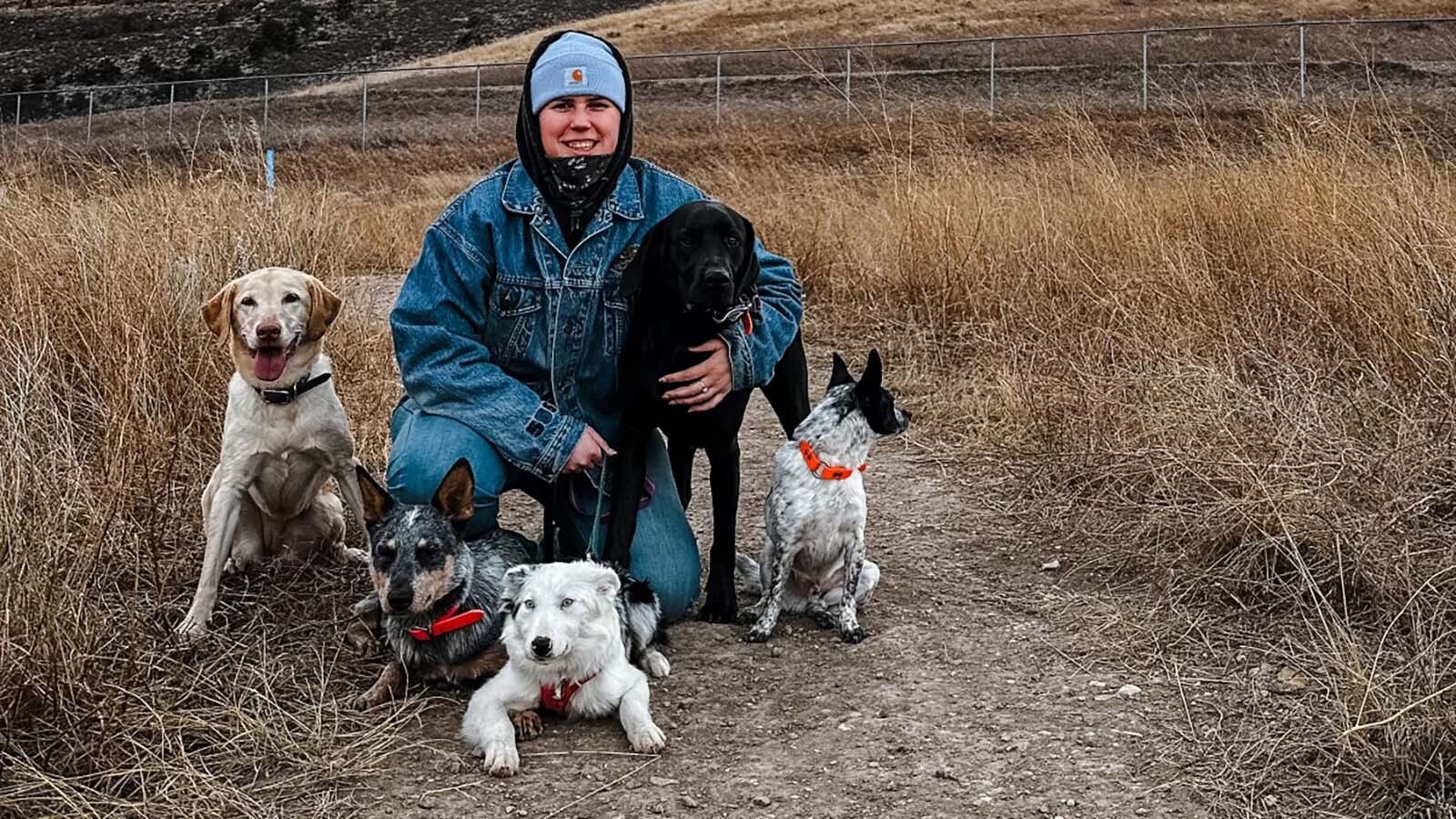It was the middle of a wintry, 1996 Saturday in Laramie and Jeff White was headed for the Buckhorn Bar & Parlor with a few co-workers at a restaurant just a few buildings down.
“As we walked into the front entrance, coming out of that side entrance was somebody who was doing the Buckhorn Roll,” White said. “Their friend was holding the door open, and this young lady came rolling down the steps, right out onto the sidewalk.”
No one called the cops. A few even laughed.
“I was like well, OK, there’s another one who successfully completed the Buckhorn roll,” White said.
The Buckhorn Roll was once an unofficial rite of passage for many University of Wyoming students. A person would stand at the top of the parlor’s carpeted stairs and simply roll down them, all the way to the bottom. Sometimes on purpose. Sometimes by drunken accident.
Since then, the carpet’s been removed and steel rims added to discourage rolling down the stairs on purpose, but at that time in the late 1990s, someone doing the Buckhorn Roll was no big deal. Just another day in the life of the legendary Buckhorn Bar, the strangest cool place where White has ever been.
The legendary Laramie watering hole, as it happens, is for sale, listed at $4.995 million.
That has old schoolmates texting and calling White to say they should all buy the bar as a group.
“We always used to joke about that, but $4.9 mill’s a little steep for our group,” White said. “But it’s nice to think about.”
Something Different
White’s isn’t the only group of students that made a pact over beers to buy the bar if it ever went on the market.
Katina Francis had the same idea.
“I’m trying to see if I can get my friends together to buy the place,” she told Cowboy State Daily. “But you know, I think that’s more of an unrealistic investment for me at this point.”
Francis, who is from Vermont, chose the University of Wyoming to study law because it would be an adventure.
“I had lived in Vermont my whole life, and I also went to college in Vermont,” she said. “So, I wanted something really different. I wanted to be out West, and I wanted to meet some cowboys.”
She laughs, and adds, “And I did.”
Francis never saw someone do the Buckhorn Roll, but remembers how the snow piled up outside the bar like mountains, while everyone inside the bar remained warm and cozy.
“There was a contingent of Norwegian students who went to UW, and they would get to singing their songs really loudly in Norwegian at the Buckhorn,” she said. They would be, you know, just really living it up. It was a lot of fun.”
Francis lived across the street from the Buckhorn and kept a pair of binoculars handy. She would use those to look inside the bar to decide if she was going to head over on a given night.
Her house was also close enough that friends would walk over after the bar closed and knock on the door to see if she was home.
“There’s really no place like it,” she said. “I would be really sad if it didn’t continue in a way that’s similar to what it’s been, just because it’s such an interesting place.”
The Legend Grows
The Buckhorn Bar & Parlor, including likely predecessors, is at least 120 years old, according to owner Mary Hopkins, and could predate Laramie itself.
When Laramie was just an end-of-tracks railroad town — essentially a tent city — it had a bar inside of a tent that was in the general vicinity of the present-day Buckhorn Bar.
“It’s claimed that it’s the oldest bar in this location in Laramie,” Hopkins told Cowboy State Daily. “It’s evolved over time, and it’s had a lot of different owners. It shows up in the earliest, about the 1911 city directory, that’s when it first shows up, and it was the Hub Bar then.”
During Prohibition, the bar was shut down and may have been a cigar shop, Hopkins said.
“I don’t know if they broke it up into sections and used it for different things during prohibition,” she said. “But it was such a railroad town, and it was known for, you know, pretty much always has been, the Wild West.”
After Prohibition, the bar reopened as the Buckhorn, and that’s been its name since.
Its bar was shipped in from Ohio, and its topper was a custom job. A number of wildlife trophies are scattered about the bar itself, as well as the walls of the bar, including the eagle that’s kept watch at the top of the bar for decades.
Among the taxidermied specimens is an actual two-headed horse, and there is a dwarf calf. Hopkins told Cowboy State Daily the two-headed horse is real, not a fabrication.
“Lots of animals are born with two heads,” she said. “Most people just do not realize it.”
The Buckhorn, like many other businesses in Laramie, featured an upstairs brothel until about the 1950s, Hopkins said, which is where the parlor is now.
“Anybody who came in on the railroad, there was the Johnson Hotel, the Connor Hotel, and they all had bars and restaurants too,” she said. “So, lots of drinking.”
About That Bullet Hole
One of the things that makes the Buckhorn iconic is its bullet hole, still there in the backbar mirror. It’s from a 1971 shooting.
Both White and Francis mention the iconic bullet hole, and were glad to hear it’s still there. It’s a defining characteristic of the bar, though most do not know why the mirror was never replaced.
There’s a simple reason. The owner at the time had just replaced it the week before it was shot, after a woman had thrown a shot glass at it. It was too expensive to replace again, so he kept it as is.
The bullet came from Charlie Phillips’ hunting rifle, and the tale is has become an eternal part of the bar’s legend.
Phillips walked into the Buckhorn one Friday night in August, armed with his rifle and an uncommon determination that Nelda, one of the bar’s employees, was going to notice him.
According to a newspaper account of the incident on the Buckhorn’s wall, Phillips had wanted to date Nelda — despite being a married man already — but she had flat-out rejected him.
“First, he fired a shot in the ceiling,” Hopkins said. “You can still see that, even though it was repaired.”
The remains of that shot hides above the middle elk’s left antlers as one faces the wall opposite the bar. It’s a little hard to see, but slightly darker than the surrounding green ceiling.
After Phillips’ first shot, panic was unleashed in the bar itself. Phillips left the bar hastily, then fired a second shot from the alley. The third shot sailed through the window, traveled through the “C” on the Coors sign, then slammed into the mirror — somehow not hitting anyone along the way — marking it forever more.
By this time police had arrived. They quickly surrounded and disarmed Phillips, taking him to the county jail on charges of aggravated assault with a dangerous weapon.
Phillips had a troubled history and was described in the newspaper article as somewhat of a drifter.
He’d been a shoe repairman in Cheyenne, where his wife lived, and had been receiving drug rehabilitation a couple years before the shooting incident from the Cheyenne mental health center.
Phillips was placed in the Wyoming Sate Hospital in Evanston for psychiatric evaluation, but fled that institution with a female patient, remaining at large with her for a while after that.
Eventually, he turned himself in to Albany County authorities. After another stint in the state hospital, his sentence was suspended. He was given a 30-day jail sentence for the Buckhorn shooting, and two years of probation.
Tearing Down The Goalpost
There’s another Laramie legend hanging over the iconic bar that’s quite noticeable. It’s a piece of a yellow goalpost with names written all over it.
White was an eyewitness to that particular piece of Buckhorn history.
“BYU, who obviously is a very longtime rival of University of Wyoming, they were ranked, I think they were like 12 or 13 in the country,” White said about the schools’ football teams. “And Wyoming had just had this awful year.”
Wyoming was 5-3 going into the game in November 1999, White said, and huge underdogs to the nationally ranked team. The Cowboys upset the undefeated Cougars 31-17.
“My dad and I went to that game together and the kids did tear down, we watched them tear down the goal posts,” White recalled. “And they marched down Grand Avenue — all the way down Grand Avenue, and they had two cop cars escorting the kids with that goalpost all the way down the street. I’d never seen anything like it before.”
There were probably 2,000 students in the impromptu parade, White said, who leaned the goalpost up against the outside of the Buckhorn Bar. It was a wee bit too tall to take into the bar itself, but people signed their name to the goalpost all through the night.
Later, it was taken apart and a section of it put over the bar, where it still hangs today.
White remembers it as an intense moment for everyone there.
“I couldn’t believe that we won,” he said. “And not only did we win, we won convincingly. Because we were just, we were just so awful all year. And then to beat them on a nationally televised game against your biggest rival. They just rose to the occasion somehow.”
Big Al
In Laramie, there’s a popular saying that anyone sitting at the Buckhorn long enough is likely to see absolutely everyone they know.
And it’s that kind of reputation that draws people to the bar, making the prediction ultimately true.
Among the many denizens of the bar who went to see and be seen was former U.S. Sen. Al Simpson. Hopkins said he was at the bar every day, without fail, to buy a beer and visit with people he knew.
“He knew everybody’s name,” Hopkins said.
Simpson even wrote a reply to some of the bar’s customers one year, who had written to him in drunken handwriting. His in-kind reply was so funny that Hopkins kept both.
“How goes it down there at your end of the arena, i.e., the bar?!” Big Al’s letter begins. “It sounds as tho you are having a grate ol’ time I luved your letter — I reelly did. It boyed me up!”
The letter goes on to say how he and his pals at the bar used to get a lot of “clarity” on the affairs of the world as they were “tossin’ down dobles.”
That, however, was back when Simpson “wayed 260, had hare, and thot beer was food.”
“It’s good to sea that the tradition carries on — all tho I never did stumble out of their with a hankering to rite to my Senator about the great experience!”
Nevertheless, Simpson wrote, “I learned more in teh Buckhorn than I did on campus. At leest I learned a lot about camaraderie and common cents and good ol’ rich wyoming humer.”
By closing time, Simpson said, he and his friends had “solved all of the problems of the State and the world” and had moved on to figuring out how to “Marshall ower meagre assets for a little further activity and still have enuff left over for shrimp-fryed rice at the Paris Cafe,” he continued. “It took a lot of energy to plan that kind of life.”
He concluded by urging them to keep on solving the problems of the world at the Buckhorn and to “stay in tuch."
Renée Jean can be reached at renee@cowboystatedaily.com.

